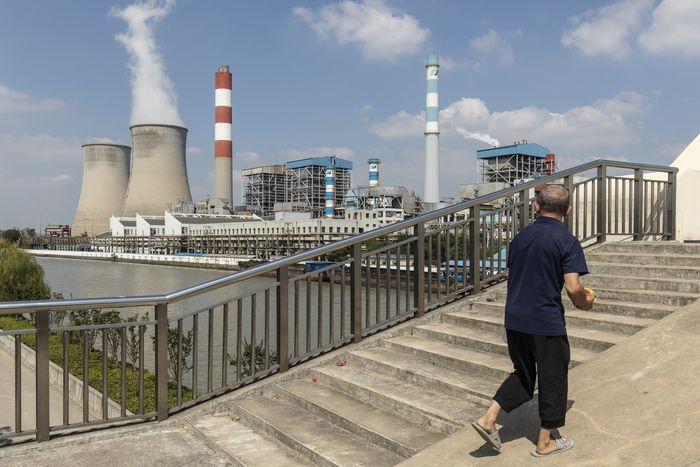
Due to rising costs and a lack of supply, coal prices have hit record highs. Soaring demand for the fuel is projected as nations look to transition away from costly renewable energy sources like solar and wind power. This can cause serious disruptions in countries that depend on coal-powered electricity.,
The “Coal Shortages Push Up Prices, Weigh on Economies” is a news article about the coal shortage and how it has been affecting the economy. The article highlights some of the side effects that have been seen as a result of this crisis.
HONG KONG, China— Coal supply constraints are driving up coal prices to new highs, exposing the difficulties of weaning the world economy off one of its most important—and polluting—energy sources.
The crisis has a number of reasons, ranging from the post-pandemic surge to supply-chain constraints and aggressive carbon-reduction goals. And it’s likely to continue at least through the winter, increasing concerns of fuel shortages in several nations in the coming months.
Newcastle thermal coal, a worldwide benchmark, is now selling for $202 per metric ton, up three times from the end of 2019. Coal output, which produces approximately 40% of the world’s energy, is roughly 5% lower than it was before the epidemic.
In Europe, increasing coal and other energy costs have harmed industrial production and increased home energy expenses. Major Asian coal importers, such as Japan and South Korea, are vying for supply.
In China, decreasing supplies and rising prices have resulted in electricity shortages on a magnitude not seen in almost a decade, wreaking havoc on industry and forcing several towns to turn off traffic lights to save energy.
It’s a harsh reminder of how much coal is used in vast areas of the globe, only weeks before a UN climate conference in Glasgow intended at speeding up the transition away from fossil fuels and toward renewable energy.
The present crisis is centered on China, the world’s second-largest economy and greatest coal user. Beijing has permitted coal inventories to decrease in order to achieve its climate goals. It also stopped imports of Australian coal due to a diplomatic spat.
The ramifications of that decision last year are still redrawing global coal supply chains, attracting new customers to Australia and pushing China to look for other sources as far as Latin America, Africa, and Europe.
Globally, coal production hasn’t kept up with demand, which has been fueled by a strong economic rebound after last year’s global downturn. Last year’s output was down approximately 5% from the previous year. And, as coal companies point out, scaling up output takes time. According to them, getting new mining vehicles may take up to nine months, and installing new equipment in mines can take much longer.
“We’re at capacity,” said Isidro Consunji, head of the Philippines’ largest producer, Semirara Mining & Power Corp., which sells the majority of its products to China. “Coal prices have increased fourfold in the past year.” Nobody in the world, I believe, anticipated a scenario like that.”
According to experts, the world’s dependence on coal has tended to vary with economic growth rather than governments’ climate goals. During the pandemic last year, global coal usage decreased, but it is projected to return to or surpass 2019 levels this year.
“When economic growth slows, everyone believes we’re moving away from coal, but when growth returns, coal usage increases again,” said Rory Simington, an analyst at energy research firm Wood Mackenzie. “There’s a disconnect between what people think is going on in the energy transition and what’s really going on.”
The present crisis is centered on China, the world’s second-largest economy and greatest coal user. Last month, a Chinese power plant.
Qilai Shen/Bloomberg News photo
Production halts as nations attempt to meet emissions goals have contributed to the coal supply shortage. Last year, Spain, for example, shut down half of its coal production and pledged to phase out all coal-fired power plants by 2030.
According to the Paris-based International Energy Agency, the turmoil in the industry is part of a decades-long change in coal trading patterns characterized by “a move to Asia and the fading of Europe in international coal markets.”
The growth of Asia is helping to drive up costs. Before Beijing, aroused by Canberra’s request for an independent investigation into Covid-19’s origins, implemented its unofficial embargo last autumn, one-third to half of coal from Australia, one of the world’s largest coal exporters, used to flow to China.
The unexpected availability of Australian supplies has been a benefit to neighboring Asian countries. As China’s coal stocks depleted in early 2020, demand for Australian coal increased by 56 percent in South Korea and 65 percent in Japan in the first half of 2021, according to government statistics.
A coal scarcity and a drive to achieve stringent emissions goals have resulted in power outages in many cities throughout China in recent days. Factory output has been delayed as a result of the disruptions, causing supply chain worries ahead of Christmas. Associated Press photo/Olivia Zhang
Despite this, Australian exports are unlikely to bridge the gap between increasing worldwide demand, the rush to store up for the winter, and supply bottlenecks. Global coal exports are expected to increase by around 2.5 percent this year compared to 2020, according to analysts, while demand is expected to increase at almost double that rate.
India almost quadrupled its metallurgical coal imports from Australia in July compared to the same month last year, continuing a trend that began at the beginning of the year, but supplies are still in limited supply.
In Japan, a spokesperson for Nippon Steel Corp. said the company has increased its imports of Australian coking coal this year as steel demand has recovered after the epidemic.
Expectations of production shortfalls this winter led Japan’s biggest power producer, JERA Co., to perform plant inspections early in order to guarantee enough energy supply, according to a spokesperson.
In recent years, Australia has provided China with an average of 85 million metric tons of coal a year, more than Canada produces in a year. To make up for the deficit, China has turned to countries close and distant, some of which are more than twice the distance from Australia. In the first eight months of the year, coal imports from Russia almost quadrupled year over year, reaching 21 million metric tons. During this time, the amount of coal produced in the United States tripled to 5.7 million tons.
As steel demand has recovered this year, Nippon Steel has increased its imports of Australian coking coal, according to a spokesperson.
Photo courtesy of Reuters/Kim Kyung-hoon
Australia’s China-bound shipments have been replaced by Asian providers. Because of increased Chinese demand, Philippine producer Semirara said its average coal sales price increased by 49 percent in the first half of this year. To satisfy increased demand, the business is attempting to expand its capacity.
China’s efforts to locate new customers have not gone smoothly. As Beijing’s dispute with Canberra grew, it attempted to lock in purchases of Indonesian coal, the majority of which is low-grade and increasingly shunned by global markets. However, severe rains interrupted the supply. Official statistics indicate that Indonesian coal shipments to China dropped 8.6% month on month in August, after similar drops in January, April, and May.
Colombia and Kazakhstan are two of the most unexpected winners. Prior to this year, China has only used the Latin American country on a sporadic basis. Colombian steam coal exports to China almost quadrupled from a year ago, reaching 2.8 million metric tons in the first eight months of the year. China now accounts for 21% of Colombia’s metallurgical coal exports, up from 0.6 percent in 2019.
Colombia’s Ministry of Mines and Energy forecasted a 50 percent increase in coal production this year compared to 2020. The windfall for Colombia, according to Juan Miguel Durán, head of the National Mining Association of Colombia, would likely continue years since demand from countries recovering from the epidemic outpaces worldwide ability to switch to cleaner energy. Colombian coal output continues to pique the attention of Chinese, Indian, Japanese, and Korean investors, he added.
Mr. Durán said, “We are in a window of opportunity that we must take advantage of in order to increase our mining potential.”
Colombian Natural Resources, the country’s fourth-largest producer, reopened processing plants that had been shuttered due to poor pricing and the pandemic last year. However, replacing equipment to increase supply would take at least six months to a year, according to Semirara’s Mr. Consunji.
“Last year, the prices were so low that no one could make a profit, so we put off purchasing additional replacement equipment,” Mr. Consunji said. “However, there will be a period of time until supply resumes.”
Colombia’s Ministry of Mines and Energy forecasted a 50 percent increase in coal production this year compared to 2020. Colombia’s Cerrejon Coal Mine.
Nicolo Filippo Rosso/Bloomberg News photo
Chuin-Wei Yap, Kejal Vyas, and Chieko Tsuneoka may be reached at [email protected], [email protected], and [email protected], respectively.
Dow Jones & Company, Inc. All Rights Reserved. Copyright 2021 Dow Jones & Company, Inc. 87990cbe856818d5eddac44c7b1cdeb8
Related Tags
- push up progression
- perfect pushup form
- deficit push up





